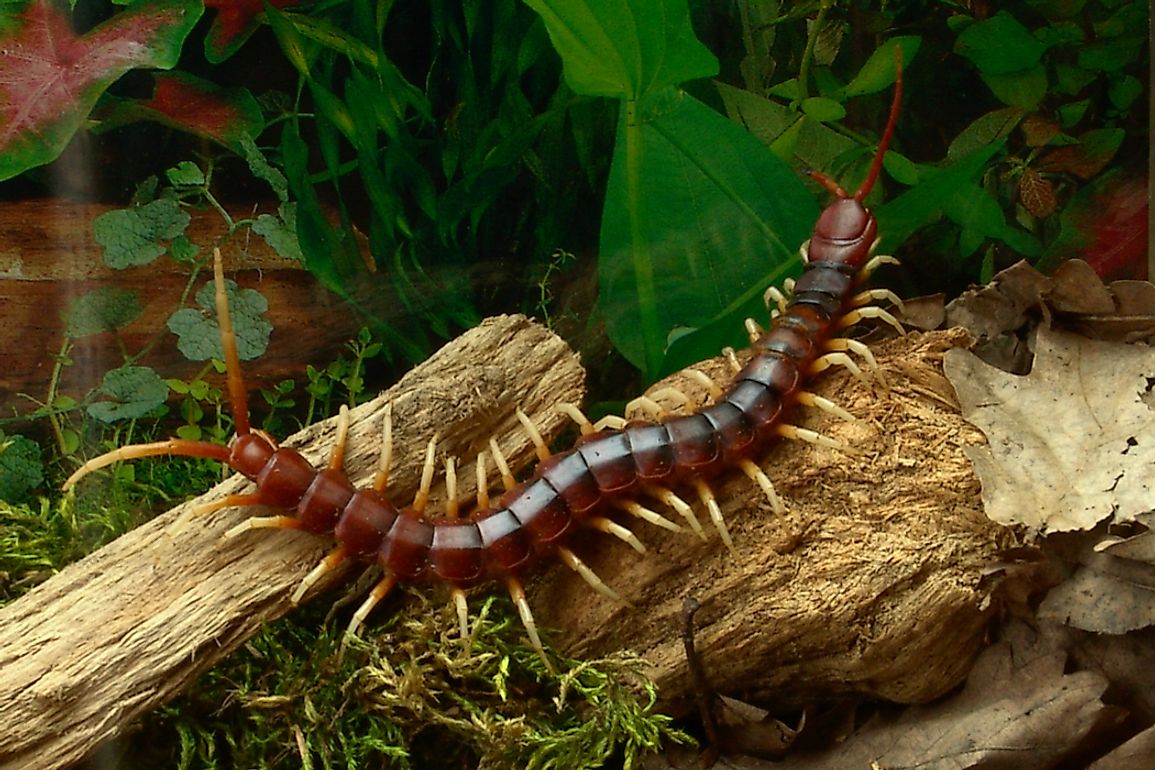What Is The World's Largest Centipede?

A centipede is an arthropod which belongs to the subphylum Myriapoda. It is an elongated metameric arthropod and it has two legs per segment. Over 8,000 centipede species are believed to exist, but only 3,000 have been discovered and classified. Their size ranges from a few inches in the small geophilomorphs to approximately 12 inches in the biggest scolopendra species. Scolopendra is one of the species-rich genera of the class Chilopoda which includes the world’s biggest centipede belonging to the Scolopendridae family. The largest centipede in the world is the Scolopendra gigantea known as the Amazonian giant centipede or the Peruvian giant yellow-leg centipede.
Amazonian Giant Centipede
The Amazonian giant centipede is the largest centipede of the Scolopendra genus with a maximum body length of about 12 inches (30 cm). The centipede is native to the Caribbean and South America. The Amazonian giant centipede preys on numerous animals including reptiles, mammals, amphibians and sizeable arthropods.
Appearance
The Amazonian giant centipede is a dorsoventrally flattened arthropod whose body is divided into numerous well-marked flat segments. Their shells are dark colored with some being either dark brown or red-maroon with yellow tinted legs. All of their body segments have two legs with their total number of legs ranging from 42 to 46. Their front pair of legs is usually modified into venom carrying legs known as the maxillipeds which they use to hunt. Their rear pair of legs is spiny and they help the centipede ward off predators.
The mandibles of a centipede have a sharp claw ending where the poison glands open. They use the mandibles for catching and killing their prey. Centipedes breathe through the spiracles which are behind the legs and right between the lower and the upped chitinous shields. The Amazonian giant centipede has spiracles on their twenty-first, nineteenth, seventeenth, fifteenth, thirteenth, eleventh, eighth, sixth, and fourth segments.
Distribution and Habitat
The Amazonian giant centipedes are found in the subtropical and tropical forests of northern South America. Some of the nations with museum specimens of these centipedes include Trinidad and Tobago, Venezuela, Colombia, Curacao, and Aruba. Due to their mode of breathing and the fact that they lack a waxy covering on their cuticles, these centipedes live in a humid environment, and therefore they live in rotten wood, leaf litter, and soil.
Behavior and Diet
They are carnivores which prey on other smaller animals which they can overpower and kill. These centipedes can overpower numerous invertebrates like tarantulas, scorpions, millipedes, spiders, and insects and smaller vertebrates like bats, mice, birds, snakes, frogs, and small lizards. Bigger Amazonian giant centipedes can climb onto roofs and manipulate or hold onto bats with some of their legs still attached to the ceiling.
Other Large Centipedes
Ethmostigmus rubripes, known as the giant centipede, is found in Oceania and Asia and can grow to over 16 cm. Cormocephalus rubriceps can grow to 25 cm in length making it the largest species of centipede found in New Zealand.











